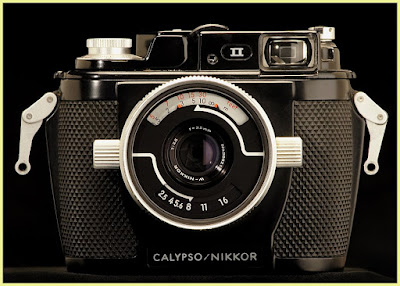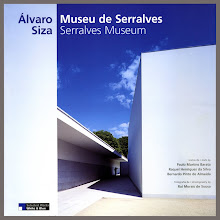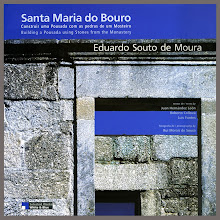...

In 1999, I spent six weeks in the USA and Canada, photographing the works of architect Mies van der Rohe. A good deal of that time was spent in Chicago, where Mies was a very influential personality. My older son, Jorge, helped me out as my assistant, as Luis, my second son, had done the year before in Europe.
Altogether I drove 27.000 km across Europe and North America (I am too lazy to find out how many miles that makes, but you can be sure that it is a LOT) to accomplish that assignment. Of course, I am also not counting the flights from Europe to America and back. Just talking about road-mileage...
As we had a lot of gear, and also for the pleasure of better seeing the country, we opted to rent a car to travel from Chicago to New York, where we did Seagram Bulding, then all the way up to Canada to make some buildings in Montreal and Toronto.
From Canada we drove back to Chicago to photograph the emblematic Farnsworth House, in Plano, Illinois, but I will talk about that in another day...
And also about Detroit, Washington D.C., Baltimore, Pittsburgh, Des Moines, Newark, Elmhurst, etc., etc. We had to drive to all those places searching for some Mies's buildings.
When all that was done, we enjoyed a cross-country ride down to Houston, Texas, to photograph the Brown Wing in the Museum of Fine Arts. From Houston we still drove back to New York (not missing the chance to visit New Orleans), where we finnally got our plane back home, via London.
Lots of cheap motels and lots of hamburgers and fast-food... Yes, we got a little short on money!
At the end we were rather exhausted, but I had finally fullfilled the dream of travelling through such, for me, mythical places as Chicago, Mississippi and Louisiana. Since I was a kid that I am a big lover of The Blues, and started buying blues records when I was thirteen or fourteen.
Believe me, it was really not that easy to find blues records in those times in Portugal. We were still living in a dictatorship under Salazar's regime and the country was very poor (not only) culturaly speaking. I can say that we were almost hermeticaly separated from the rest of the world.
"Proudly alone", as they used to say. Well, I guess that in a certain way we still are...
Altogether I drove 27.000 km across Europe and North America (I am too lazy to find out how many miles that makes, but you can be sure that it is a LOT) to accomplish that assignment. Of course, I am also not counting the flights from Europe to America and back. Just talking about road-mileage...
As we had a lot of gear, and also for the pleasure of better seeing the country, we opted to rent a car to travel from Chicago to New York, where we did Seagram Bulding, then all the way up to Canada to make some buildings in Montreal and Toronto.
From Canada we drove back to Chicago to photograph the emblematic Farnsworth House, in Plano, Illinois, but I will talk about that in another day...
And also about Detroit, Washington D.C., Baltimore, Pittsburgh, Des Moines, Newark, Elmhurst, etc., etc. We had to drive to all those places searching for some Mies's buildings.
When all that was done, we enjoyed a cross-country ride down to Houston, Texas, to photograph the Brown Wing in the Museum of Fine Arts. From Houston we still drove back to New York (not missing the chance to visit New Orleans), where we finnally got our plane back home, via London.
Lots of cheap motels and lots of hamburgers and fast-food... Yes, we got a little short on money!
At the end we were rather exhausted, but I had finally fullfilled the dream of travelling through such, for me, mythical places as Chicago, Mississippi and Louisiana. Since I was a kid that I am a big lover of The Blues, and started buying blues records when I was thirteen or fourteen.
Believe me, it was really not that easy to find blues records in those times in Portugal. We were still living in a dictatorship under Salazar's regime and the country was very poor (not only) culturaly speaking. I can say that we were almost hermeticaly separated from the rest of the world.
"Proudly alone", as they used to say. Well, I guess that in a certain way we still are...

Chicago´s Federal Center+ The Loop Post Office+"The Flamingo" by Alexander Calder

The other side of the Post Office

Beatiful "Flamingo", raising 53-foot (16m) above the ground
We carried a Horseman SW612 Professional with Rodenstock optics, and a Gandolfi Variant 4x5 inches with Schneider lenses. I use a black Variant made of MDF, and I find it to be a very ruged and versatil instrument. It has lots of movements, really competing with a monorail camera in this aspect. On the downside, it really is so heavy as a monorail camera...
To keep our outfit "small", we used only 120 film in the 6x12 Horseman roll film magazines , both on the SW612 and the Variant (I also used a 6x9 magazine on the SW612, what makes a nice combination with the Apo-Grandagon 35mm, and for some details I also had a 6x7 Linhof roll film holder on the Gandolfi).
As far as I remember, I didn't use any sheet film in this trip.
I remember using Ektachrome 100 VS on a lot of images. It was a new emulsion by than, but I must say that I am not a big fan of "vivid" emulsions. I think that sometimes they have too much contrast.
As I often say, newer is not necessarily better! I mean, in my opinion.
The year before, in Europe, I even took my Gandolfi 8x10 inches along, together with a Corfield WA67, mainly for interior photography.
You can see some of that photographs on my first post on Mies van der Rohe about the Neue National Galerie in Berlin, Germany.
I hope that you enjoy the images.
To keep our outfit "small", we used only 120 film in the 6x12 Horseman roll film magazines , both on the SW612 and the Variant (I also used a 6x9 magazine on the SW612, what makes a nice combination with the Apo-Grandagon 35mm, and for some details I also had a 6x7 Linhof roll film holder on the Gandolfi).
As far as I remember, I didn't use any sheet film in this trip.
I remember using Ektachrome 100 VS on a lot of images. It was a new emulsion by than, but I must say that I am not a big fan of "vivid" emulsions. I think that sometimes they have too much contrast.
As I often say, newer is not necessarily better! I mean, in my opinion.
The year before, in Europe, I even took my Gandolfi 8x10 inches along, together with a Corfield WA67, mainly for interior photography.
You can see some of that photographs on my first post on Mies van der Rohe about the Neue National Galerie in Berlin, Germany.
I hope that you enjoy the images.
...




.jpg)






+copy.jpg)
+copy.jpg)
+copy.jpg)
+copy.jpg)
+copy.jpg)
+copy.jpg)